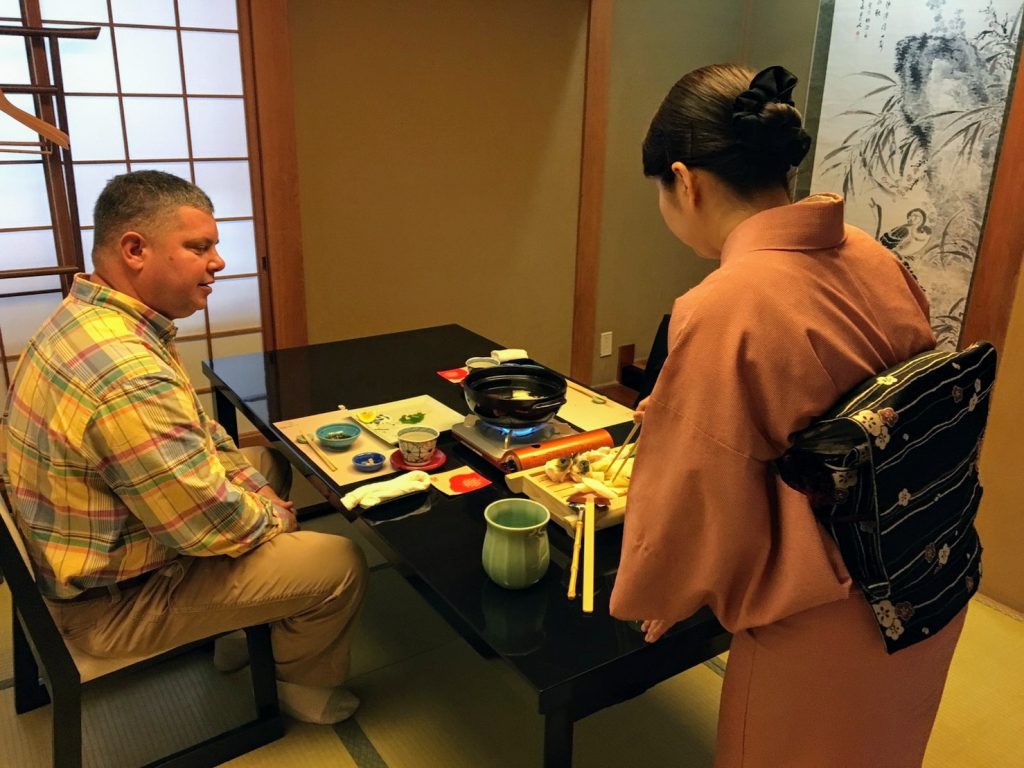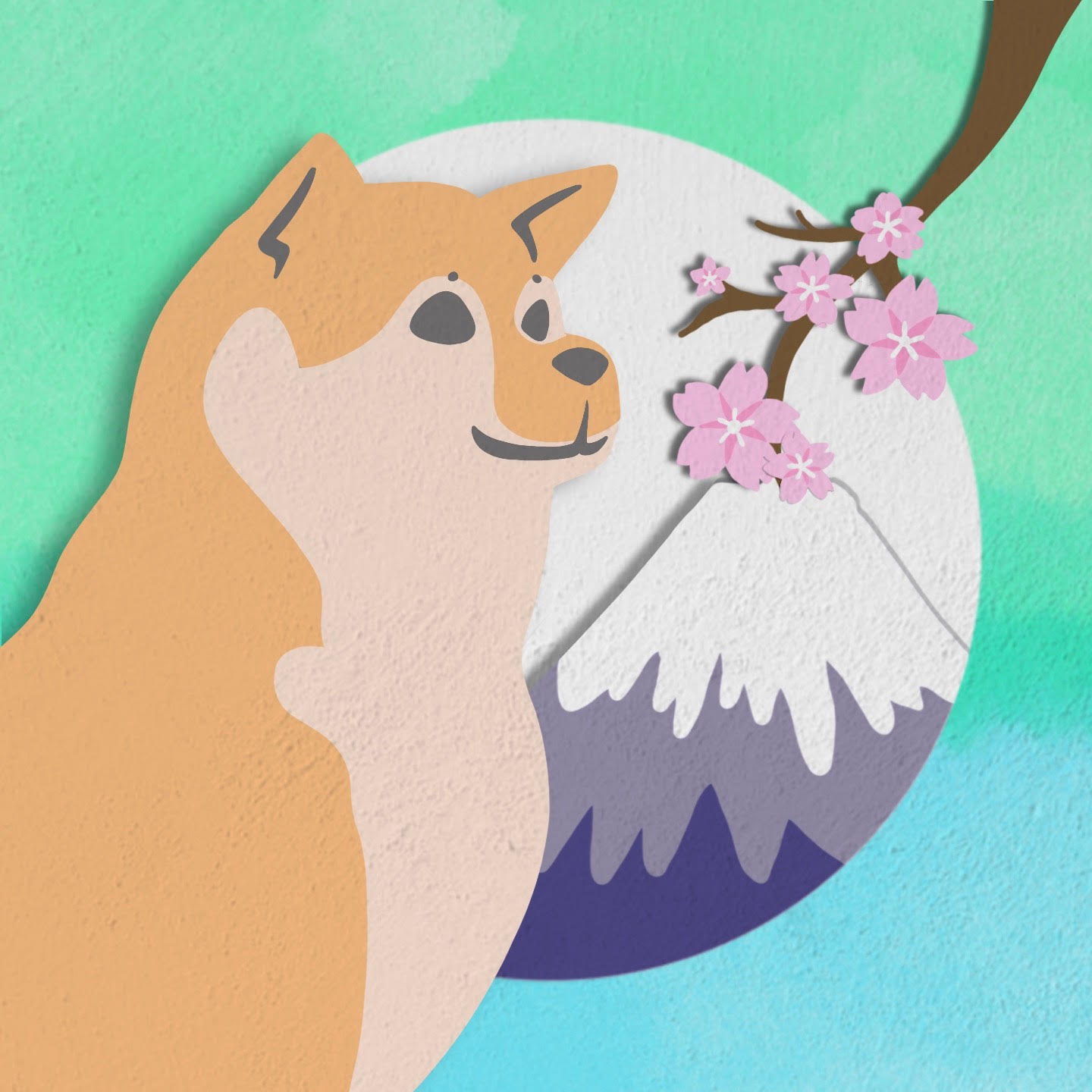Fugu, the small, seemingly innocuous blowfish is revered for its exceptional taste but has poisonous venom concentrated in its blood and internal organs.

Since moving to the northeastern part of Kyushu last summer, my wife and I had been anticipating a chance to sample one of Japan’s quintessential delicacies, which we knew was famous in this part of the country. I am referring to fugu, the small, seemingly innocuous pufferfish (sometimes called “blowfish”), which is revered for its exceptional taste but has venom concentrated in its blood and internal organs. If consumed, the poison will relax your muscles to the point that you will eventually stop breathing and die, and there is no known antidote for the fugu’s poison. In fact, it is so potent that a special license is required for all fugu chefs to ensure that they have been properly trained to prepare this potentially deadly dish, and members of the Imperial Family are, apparently, prohibited from eating it. Thus, filleting fugu is truly a situation where the warning “do not try this at home” should be taken literally. As long as a trained professional prepares your meal of fugu, there is, however, no reason to fear and no real concern for one’s personal safety. We decided, therefore, to take our chances!

We had also heard that, while it is possible to find fugu throughout the year, the best time to eat this special meal is from January through March. Our next step was to seek out a reputable establishment with a licensed chef. After asking around, it quickly became apparent that all roads lead to the old castle town and fishing port of Usuki in Oita Prefecture (大分県臼杵市) and, in particular, to a 118-year-old ryotei (料亭), a traditional restaurant featuring traditional haute cuisine, called Yamadaya (山田屋). Usuki has a relatively large number of fishermen who specialize in netting fugu from the body of water called Bungo Suido (豊後水道), which is one of the premier sources for fish in Japan. It is where the Pacific Ocean and Seto-Nai-Kai Inland Sea converge through a narrow straight in between Kyushu and Shikoku, which has powerful currents. It is in this environment that fugu thrives.
One of the first restaurants to capitalize on thrill-seekers who appreciate the unique, refined taste of fugu was Yamadaya. The original proprietors opened for business in a humble shack adjacent to the docks, but over a century ago, moved to the current location a few blocks inland near the base of what remains of Usuki’s old castle where they built a mini-oasis complete with a traditional Japanese garden and koi pond. The entrance to Yamadaya is similar to that of an ultra-deluxe ryokan or Japanese inn. All guests are immediately greeted by a kimono-clad attendant who escorts your party to a private room. This is definitely the kind of place where reservations are a must. The architecture is gorgeous, and while we could faintly hear other guests, we never saw them once we sat down in our rokujo (6 tatami mat) size room with its own toku-no-ma alcove for special decorations. Despite the compact size of this very traditional room, there were separate sliding doors for the guests and the staff. Thus right off the bat, we could tell that our meal would be an intimate, private dining experience!

We had arrived in time for lunch, which is, in general, a good approach for sampling high-end restaurants for the first time, especially because some of the more reasonably priced menu options are only available at this time. While we could have splurged on one of the three prix fixe courses available for both lunch and dinner, we cautiously chose the fugu mini-course, which is only offered as a lunch. However, there was nothing “mini” about this six-course meal that took more than 2 hours to finish and left us quite satisfied. Except for dessert, each course featured “Tora fugu” (虎ふぐ) or the tiger pufferfish, which is, apparently, the most toxic variety of fugu. It is, in fact, the most poisonous fish in the world. Keep in mind that we were paying good money for this opportunity!
Yamadaya wasted no time getting right down to business with a starter of fugu skin served as gelatinous shavings marinated in sumiso (酢味噌), a chilled, tasty combination of miso paste and vinegar. When I asked our waitress whether the chef had, in fact, drained away all of the poison, she politely laughed and assured us that there was nothing to worry about. She then reminded us of the restaurant’s century-plus heritage with no deaths or even casualties and further encouraged us to relax. This was somewhat reassuring, but we probably would have been able to breathe easier at this point by washing down the fugu skin with some alcohol, such as Japanese sake, beer, or shochu. As it was still the only lunchtime, we made due, however, with ryokucha (緑茶) or green tea served in exquisite, antique porcelain cups. This selection turned out to be the perfect pairing for our exotic lunch and amplified the taste of each course of fugu.

Next came the pièce de résistance, thinly sliced pieces of translucent, raw fugu sashi (刺し). The pieces were layered on top of each other and spread out on a beautiful ceramic plate like a fan. This is the image that most Japanese conjure up when they think of fugu. The raw fish was accompanied by ponzu sauce, chives, a slice of kabosu fruit, a combination of lemon and lime, and a slightly spicy, bright red momiji oroshi daikon radish. We were instructed to squeeze some kabosu juice directly over the raw fish, dilute the citrus ponzu sauce with as much momiji oroshi as we could handle, roll a few of the chives inside the fugu sashi and then dip each piece into the ponzu sauce. This may sound a little complicated, but you’ll get the hang of “rolling your own” fugu in no time. We chose to take our time and savor each piece. Before we knew it, another kimono-clad waitress appeared with the next course, deep-fried “kara-age” (唐揚げ) bone-in fugu. This was somewhat of a surprise, as I would have expected tempura at such a traditional restaurant. Fish prepared as kara-age is not dipped in batter like tempura but coated with flour and corn starch after being marinated. It is, however, nothing like a typical “fish and chips” flavor but much lighter. While navigating through the bones was a little challenging with chopsticks, the crispy meat baked-into the kara-age was very succulent.

Next up was a hot pot or nabe (鍋) that featured large chunks taken from the blowfish’s cheeks. We were told that this part of the fugu is particularly rich in collagen and would be good for our skin. The chefs at Yamadaya attempt to use almost every part of the fugu to ensure that nothing goes to waste. Probably to try to get a rise out of me our waitress added, however, that we would not be served the eyeballs because lots of poison is concentrated there. What a relief! The hot pot also featured plenty of seasonal vegetables including shitake mushrooms which are also a specialty of Oita Prefecture. We cooked right at the table—under the watchful supervision of our waitress–who intervened from time to time to stir the soup and monitor the portable hot pot burner which was heated by a small gas canister in a cartridge. After we cooked three or four bowls of piping hot fugu nabe, our waitress took away the remaining broth to make a delicious rice porridge called zosui (雑炊). It was served together with refreshing, crisp pickles called tsukemono (漬物). While the slices of raw fugu were outstanding, I have to admit that the porridge was my favorite part of the meal.

When we thought that we could not eat anymore, out came a light carrot mouse as dessert. It was the first course of the entire lunch devoid of fugu. While I could have gone for something a bit sweeter to satisfy my foreign taste buds, this light dessert turned out to be the perfect way to finish our delicious lunch.
Although it is, no doubt, best to travel all the way to Usuki to sample fugu so close to the source, Yamadaya also has a branch in nearby Oita City and two restaurants by the same name in Tokyo. There is one in Marunouchi and another in Nishi Azabu. While Yamadaya charges a premium for essentially the same meal that we enjoyed at their branches in Tokyo, they airship fresh fugu from Kyushu daily. The staff of Yamadaya are also prepared to take your reservations and orders in English, and they even have a bilingual website. Check out the following URL for more information:
https://www.usukifugu-yamadaya.jp/English_Home.html
We certainly had fun joking with our waitress about whether we were actually risking our life by eating lunch at Yamadaya, but by the end of the meal, we knew that we had done much more than survive. We had experienced one of the unique elements of traditional Japanese cuisine that is pretty much only available in Japan and best experienced near the dock in Usuki.
Related Articles
AI Girlfriends: Exploring the World of Virtual Companions
AI-generated girlfriends are growing popular on Japanese Twitter. Learn more about what they can do, and what it could mean for the future.
Discover Japan’s Top 10 Must-Visit Places
From stunning landscapes to bustling cities, Japan offers many unforgettable experiences. Here are Japan’s top 10 best places to visit!





